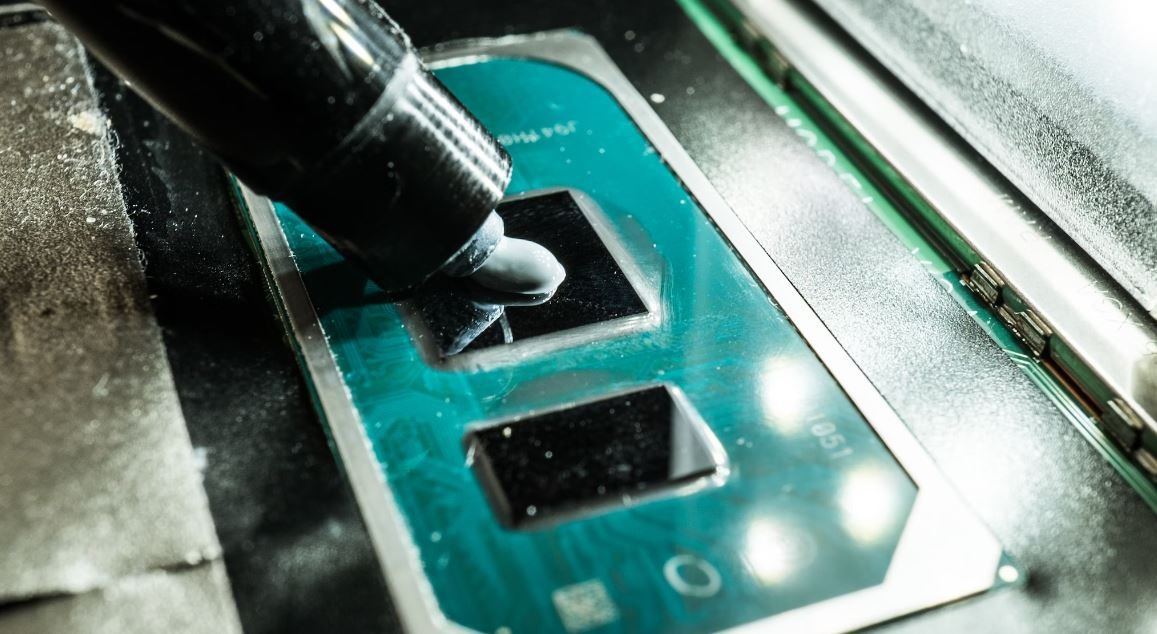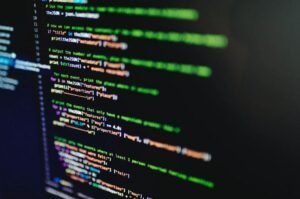Are AI Robots Dangerous?
The rise of Artificial Intelligence (AI) has brought about remarkable advancements in robotics. With robots becoming more autonomous and intelligent, concerns have been raised about their potential dangers. This article aims to explore the question: are AI robots dangerous?
Key Takeaways:
- AI robots have the potential to cause harm if not properly designed and controlled.
- Human error and misuse of AI robots can also contribute to dangerous situations.
- Ethical considerations and regulations are crucial in ensuring the safe use of AI robots.
Potential Risks of AI Robots
While AI robots offer numerous advantages, it is important to acknowledge the potential risks they pose. Due to their autonomous nature, AI robots can make decisions based on complex algorithms, which may lead to unintended consequences. **These unintended consequences may range from property damage to physical harm**. Therefore, it is essential to have proper safety protocols in place to minimize these risks. *AI robots must be carefully programmed to prioritize human safety and be equipped with fail-safe mechanisms to prevent accidents*.
Ethical Considerations in AI Robotics
The development of AI robots raises ethical questions surrounding their usage. *For instance, should AI robots be programmed to prioritize the preservation of human life over their own existence?* **Ethical guidelines must be established to address dilemmas such as the infamous trolley problem**. Moreover, ensuring AI robots respect human privacy is crucial, as they have the potential to collect extensive amounts of personal data. *Striking the right balance between AI robot capabilities and protecting individuals’ digital privacy remains an ongoing challenge*.
Regulation and Safety Standards
With the rapid advancement of AI technology, regulations and safety standards play a vital role in mitigating potential dangers. Governments and organizations must collaborate to establish guidelines that oversee the design, production, and deployment of AI robots. **Safety audits and certifications can help verify that AI robots meet specific safety requirements**. Furthermore, regular updates and mechanisms to address vulnerabilities must be implemented to ensure the ongoing safety of AI robots.
Case Studies: AI Robot Incidents
To illustrate the potential dangers, let’s look at a few notable incidents involving AI robots:
| Date | Incident | Consequences |
|---|---|---|
| 2015 | Self-driving car accident | Fatal collision due to software malfunction. |
| 2016 | Industrial robot accident | Worker injured due to improper safety protocols. |
| 2018 | Autonomous drone incident | Trespassing and invasion of privacy. |
The Future of AI Robots and Safety
As AI technology continues to advance, the future of AI robots holds both promise and challenges. Ensuring the safe use of AI robots requires a multidisciplinary approach involving engineers, ethicists, policymakers, and the general public. By establishing a comprehensive framework of regulations, ethical guidelines, and safety standards, we can harness the potential of AI robots while minimizing the associated risks.
In conclusion, while AI robots have the potential to be dangerous, proactive measures can be taken to mitigate risks and ensure their safe deployment. Ethical considerations, regulations, and ongoing safety assessments are essential components in fostering a future where AI robots coexist safely with humans.

Common Misconceptions
Misconception 1: AI Robots are designed to harm humans
One common misconception about AI robots is that they are designed with the intention to harm humans. However, this is not true. AI robots are created for various purposes, such as in healthcare, manufacturing, and customer service sectors. Their primary goal is to augment human capabilities rather than pose a threat to our safety.
- AI robots in healthcare assist medical professionals in diagnosing diseases and performing surgeries more accurately.
- Robots used in manufacturing sectors enhance productivity and streamline operations.
- Customer service robots provide efficient and personalized assistance to customers.
Misconception 2: AI Robots will take over all human jobs
Another misconception is the fear that AI robots will replace humans in the workforce, leading to mass unemployment. While it’s true that AI automation may replace certain repetitive tasks, it is unlikely that robots will completely take over all human jobs. Instead, AI technology is more likely to complement human workers and free them up for more creative and complex tasks.
- AI technology can automate mundane tasks like data entry, allowing employees to focus on analysis and decision-making.
- Robots can assist in hazardous or physically demanding jobs, reducing the risk to human workers.
- AI-driven automation can lead to the creation of new job roles, requiring skills in managing and collaborating with AI systems.
Misconception 3: AI Robots possess human-like consciousness
One misconception that arises from science fiction is the belief that AI robots possess human-like consciousness and can think and feel like us. However, current AI technology is nowhere near replicating human consciousness, emotions, or subjective experiences. AI robots lack self-awareness and are limited to executing pre-programmed tasks, following patterns, or making decisions based on algorithms.
- AI robots use data analysis to recognize patterns and perform tasks efficiently.
- Robots can learn from experience by adjusting their algorithms but do not have subjective experiences associated with consciousness.
- AI technology is designed to simulate human behavior and interaction, but not to replicate human consciousness.
Misconception 4: AI Robots are inherently biased
Some people believe that AI robots are inherently biased due to their reliance on algorithms and data. While it is true that AI systems can reflect the biases present in their training data, this does not mean that robots are deliberately programmed to be biased. Bias in AI is typically unintentional and a result of human biases present in the data used for training.
- Developers are working towards reducing biases in AI systems by improving data collection and algorithmic fairness.
- AI technology can be audited and tested to identify and mitigate potential biases.
- Proper training and data preprocessing can help minimize biases in AI systems.
Misconception 5: AI Robots will rebel against humans
A popular misconception about AI robots is that they will eventually rebel against humans and take control, similar to what is often portrayed in science fiction. However, such scenarios involve AI becoming self-aware, which is well beyond the capabilities of current AI technology. AI robots are purposely designed to be under human control and cannot independently develop the desire or capability to rebel.
- Robots are programmed with specific limitations and safeguards to prevent any rogue behavior.
- AI robots are designed to follow predefined protocols and instructions set by humans.
- There are strict ethical guidelines and regulations in place to ensure responsible AI development.

Introduction
Artificial intelligence (AI) robots have become increasingly prevalent in our society, creating both fascination and concern. As their capabilities continue to advance, questions arise about the potential dangers they might pose. This article aims to examine various aspects of AI robots and provide verifiable data on their potential risks.
Table 1: Accidents Caused by AI Robots
Despite rigorous safety measures, accidents involving AI robots have occurred. This table presents a list of notable incidents caused by AI robots in various industries.
| Incident | Industry | Consequences |
| ——————– | —————- | ——————————————— |
| Car collision | Automotive | Multiple injuries and vehicle damage |
| Surgical mishap | Healthcare | Misdiagnosis leading to complications |
| Maintenance error | Manufacturing | Equipment breakdown, production delays |
| Drone accident | Aviation | Property damage and disruption of air traffic |
| Service robot error | Hospitality | Injuries to guests due to malfunctioning |
Table 2: AI Robots in Healthcare
The integration of AI robots in the healthcare sector offers promising advancements. This table highlights the positive impact of AI robots on patient care and medical research.
| Application | Benefits |
| ———————— | —————————————————- |
| Medical diagnosis | Improved accuracy and speed in detecting diseases |
| Robotic surgery | Less invasive procedures and faster recovery |
| Elderly care | Enhanced monitoring and support for aging population |
| Drug discovery | Accelerated research and identification of compounds |
Table 3: AI in Law Enforcement
AI robots are also being deployed in law enforcement agencies worldwide. This table showcases the advantages and potential concerns surrounding their utilization.
| Application | Advantages |
| ————————— | —————————————————————– |
| Surveillance | Enhanced monitoring and crime prevention |
| Forensic analysis | Efficient data analysis for investigations |
| Public safety | Quick response to emergencies and potential threat identification |
| Privacy concerns | Potential for misuse and infringement of civil liberties |
Table 4: AI in Finance
Financial institutions are adopting AI robots to streamline operations, but this table identifies potential risks and the benefits they bring to the industry.
| Application | Risks |
| ————————— | ————————————————- |
| Fraud detection | Improved detection of fraudulent activities |
| Algorithmic trading | Potential for market manipulation |
| Customer service | Enhanced support but potential job displacement |
| Data analytics | Improved risk assessments and investment decisions |
Table 5: AI in Education
AI robots are revolutionizing the education sector, allowing personalized learning experiences. This table explores the positive outcomes and concerns regarding their implementation.
| Application | Benefits |
| ————————– | —————————————————— |
| Tailored learning | Individualized teaching and adaptive curricula |
| Tutoring assistance | Providing additional guidance and support |
| Data-driven insights | Identifying student needs and areas for improvement |
| Ethical concerns | Privacy issues and potential bias in algorithms |
Table 6: AI Robots in Industry
The use of AI robots in various industries presents benefits and challenges. This table sheds light on their implications for the manufacturing and automation sectors.
| Application | Implications |
| ————————— | ——————————————————– |
| Increased productivity | Faster, more efficient production processes |
| Job displacement | Automation leading to workforce restructuring |
| Quality control | Enhanced precision and consistency in production |
| Training requirements | Reskilling workers to adapt to robot-assisted workflows |
Table 7: AI in Customer Service
A growing number of businesses are incorporating AI robots in customer service. This table highlights the advantages and potential drawbacks of this approach.
| Application | Advantages |
| ————————– | ————————————————– |
| 24/7 support | Round-the-clock assistance for customers |
| Efficient query handling | Faster resolution times and reduced hold times |
| Lack of human touch | Reduced personal connection and empathy |
| Language limitations | Potential communication barriers with customers |
Table 8: AI Robots in Transportation
The transportation sector has embraced AI robots to facilitate efficient and safer travel. This table discusses the potential benefits and concerns within this area.
| Application | Benefits |
| ———————— | ——————————————————- |
| Autonomous vehicles | Enhanced road safety and reduced human error |
| Traffic management | Optimal route planning and congestion reduction |
| Public transport | Improved efficiency and reliability of services |
| Cybersecurity | Vulnerabilities in autonomous systems |
Table 9: AI in Entertainment
AI robots are also making their mark in the entertainment industry, revolutionizing the creative process. This table showcases the positive impacts and associated concerns.
| Application | Impacts |
| ————————– | ——————————————————- |
| Content creation | Streamlined production and increased efficiency |
| Personalized experiences | Tailoring content to individual preferences |
| Intellectual property | Potential copyright and ownership disputes |
| Societal implications | Redefining concepts of artistry and authenticity |
Table 10: Public Perception of AI Robots
Understanding how the public perceives AI robots is crucial in evaluating their potential dangers. This table outlines the varying opinions and concerns across different demographics.
| Group | Perception |
| ————————– | —————————————————- |
| Millennials | Excitement about technological advances, slight concerns |
| Senior citizens | Mixed feelings, balancing the benefits with uncertainties |
| Tech enthusiasts | Optimism about the potential, believe risks can be mitigated |
| Ethicists | Cautious approach, advocating for ethical guidelines |
In conclusion, AI robots, while offering numerous benefits across various sectors, also carry potential risks and concerns. Evaluating their impact requires considering factors such as safety protocols, ethical considerations, and potential job displacement. As technology continues to advance, an ongoing dialogue among stakeholders becomes vital to ensuring AI robots are integrated into society responsibly.
Frequently Asked Questions
1. Are AI robots dangerous?
What are AI robots?
AI robots, also known as artificial intelligence robots, are machines that are capable of learning, reasoning, and making decisions on their own using algorithms and data analysis. These robots can perform various tasks autonomously, mimic human behavior, and interact with their surroundings.
2. Can AI robots cause harm to humans?
What safety measures are in place to prevent harm caused by AI robots?
AI robot developers and manufacturers adhere to stringent safety regulations and guidelines to minimize the risk of harm to humans. These measures include robust testing, fail-safe mechanisms, ethical design principles, and regular monitoring and updates to address any potential risks.
3. Are AI robots programmed to harm humans?
Do AI robots have ethics and moral considerations programmed into them?
AI robots can be programmed with ethical guidelines and rules to ensure they behave responsibly and do not cause harm to humans. However, the responsibility lies with the developers and programmers to impart these values and ensure compliance with ethical standards.
4. What are the potential dangers of AI robots?
Can AI robots become uncontrollable and pose a threat?
While it is theoretically possible for AI robots to malfunction or be exploited, developers work diligently to implement safeguards and control mechanisms to mitigate such risks. Regular monitoring, rigorous testing, and proper regulation of AI technology help minimize the potential dangers.
5. Are there any real-life incidents where AI robots have caused harm?
Can you provide examples of AI robot-related accidents or incidents?
While there have been occasional incidents involving robots, they are rare and often due to user error or improper handling rather than inherent dangers of AI robots themselves. These incidents prompt further safety improvements and updates in the field of robotics.
6. How do authorities regulate the safety of AI robots?
Are there laws or regulations in place to oversee the safety of AI robots?
Various governments and international organizations have started developing regulations and frameworks to ensure the responsible development and deployment of AI robots. These regulations focus on ethical considerations, safety standards, privacy protection, and establishing accountability for any potential harm caused by AI robots.
7. Can AI robots be used for malicious purposes?
Is there a risk of AI robots being misused or hacked to cause harm?
Although there is a potential risk of AI robots being misused or hacked, cybersecurity measures and defensive programming techniques are continuously developed and implemented to safeguard against such threats. Efforts are made to stay ahead of potential malicious activities and prevent unauthorized access or control of AI robots.
8. How are AI robot manufacturers addressing ethical concerns?
What steps are being taken to ensure ethical use of AI robots?
AI robot manufacturers are increasingly adopting ethical guidelines and principles in their design and development processes. Collaborations, discussions, and partnerships between industry experts, policymakers, and researchers help establish ethical frameworks, ensure transparency, and foster responsibility in the use of AI technology.
9. How can the general public stay safe around AI robots?
What precautions should individuals take when interacting with AI robots?
To ensure personal safety around AI robots, individuals should follow user guidelines and instructions provided by the manufacturers. It is important to respect the limitations of the robots, avoid tampering or unauthorized access, and report any issues or concerns to the relevant authorities or manufacturers.
10. What does the future hold for the safety and regulation of AI robots?
Are there ongoing efforts to improve the safety and regulation of AI robots?
Researchers, policymakers, and industry stakeholders are actively collaborating to enhance the safety and regulation of AI robots. Ongoing research, development of best practices, and continuous evaluation of risks and benefits contribute to a better understanding of AI technology, enabling the establishment of robust standards and frameworks for the future.




